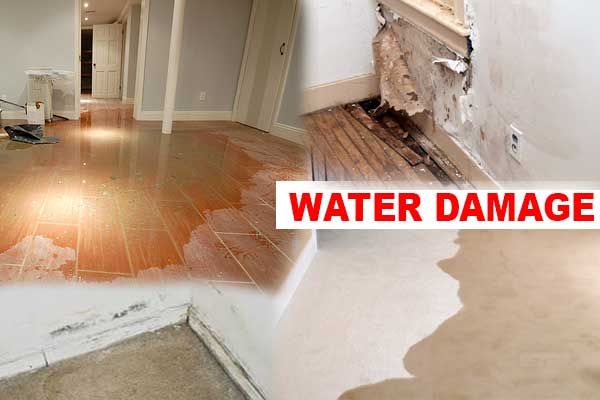Reliable Water Mitigation Methods You Required to Know
Water damage can be a disruptive and pricey problem for residential property proprietors, making it important to be fluent in reliable water mitigation techniques. From very early discovery and evaluation to reliable water extraction methods and thorough drying out techniques, there are essential actions to take in mitigating water damages.

Early Discovery and Examination
Early detection and inspection are essential actions in the process of water mitigation to recognize and resolve prospective sources of water damages immediately. Recognizing these concerns early on can avoid further rise of water damage, ultimately conserving time and resources in the mitigation process.
In addition, early detection enables quick activity to be taken in drying impacted areas and executing necessary repair services to stop mold development, architectural deterioration, and other long-term consequences of water damage. Prompt intervention not just mitigates the prompt impact of water breach but additionally helps in preserving the honesty and safety of the residential or commercial property in the lengthy run. Prioritizing very early discovery and evaluation as basic parts of water mitigation methods is crucial for reliable damage control and repair initiatives.
Reliable Water Extraction Techniques
Discovery and examination are vital actions in any water mitigation process, laying the foundation for effective water removal approaches to swiftly eliminate excess water from influenced areas. Once the extent of water damage is examined, it is critical to use effective extraction methods immediately. Water removal can be attained via numerous methods, consisting of using effective pumps, damp vacuums, and dehumidifiers.
Expert water mitigation teams typically use completely submersible pumps to promptly remove huge amounts of water from the facilities. These pumps can drawing out water at a fast speed, lessening the danger of additional damage to the building. Wet vacuum cleaners are additionally generally made use of to target smaller sized areas or hard-to-reach spaces where standing water persists.
In addition, dehumidifiers play a crucial function in the water extraction process by lowering dampness degrees in the air and increasing the total drying time - mold mitigation saratoga. By integrating these extraction approaches tactically, water mitigation specialists can successfully extract water, mitigate damages, and avoid mold development, eventually restoring the affected location to its pre-loss condition
Thorough Drying Strategies
To ensure detailed water damages mitigation, complete drying out techniques are necessary in eliminating residual wetness and protecting against potential structural concerns. After water removal, the focus shifts to drying the impacted locations entirely.
In cases of water damages, permeable products like drywall and carpets can trap wetness, bring about mold and mildew growth and structural weakening if not appropriately dried out. To address this, professionals may make use of customized equipment such as moisture meters to measure wetness levels within products, ensuring extensive drying out. Additionally, the elimination of baseboards or drilling little holes in walls may assist in drying in wall surface tooth cavities where dampness can stick around undetected.
Mold Avoidance and Removal
Adhering to the detailed drying out methods in water mitigation, the emphasis currently moves in the direction of attending to mold prevention and removal to secure against possible carcinogen and architectural damages. Mold can quickly create in areas influenced by water damages, positioning significant wellness risks and jeopardizing the integrity of the structure. To stop mold development, it is vital to promptly get rid of any type of water-damaged products, in addition to extensively clean and decontaminate the impacted locations. Correct ventilation and dehumidification additionally index play essential duties in mold avoidance by decreasing dampness levels that promote mold and mildew growth.
It is crucial to deal with mold issues promptly and effectively to prevent more damages and guarantee the safety of passengers. By carrying out these mold avoidance and remediation techniques, the risks connected with water damages can be considerably lowered.
Structural Repair Service and Restoration

Restoration efforts commonly extend past architectural fixings to consist of aesthetic enhancements. Painting wall surfaces, changing flooring, and dealing with any kind of visible water discolorations are typical practices. It is important to not only fix the structural damages yet also to recover the aesthetics of the room. Additionally, addressing any type of lingering dampness problems and ensuring appropriate ventilation can help prevent future structural damages and mold development. By immediately and efficiently resolving structural concerns post-water damage, residential property owners can guard their buildings and recover them to their pre-damage condition.
Conclusion
Finally, reliable water mitigation techniques such as early discovery, effective water removal, comprehensive drying, mold and mildew avoidance, and architectural repair are vital in reducing damages and restoring affected areas (mold mitigation saratoga). By adhering to these actions faithfully, homeowner can reduce the effect of water damage and avoid additional problems such as mold growth. It is essential to act quickly and employ these techniques to ensure a successful water mitigation procedure
Water damages can be a expensive and disruptive issue for residential property proprietors, making it vital to be skilled in efficient water mitigation techniques. From very early discovery and assessment to effective water extraction techniques and extensive drying out methods, there are important steps to take in mitigating water damages.Very early detection and inspection are vital steps in the process of water reduction to recognize and deal with potential resources of water damage quickly.Discovery and examination are crucial steps in any kind of water mitigation procedure, laying the structure for efficient water removal techniques to swiftly get rid of excess water from impacted areas.In verdict, effective water reduction methods such as very early discovery, efficient water extraction, extensive drying, learn this here now mold and mildew prevention, and architectural repair are critical in lessening damage and bring back impacted areas.